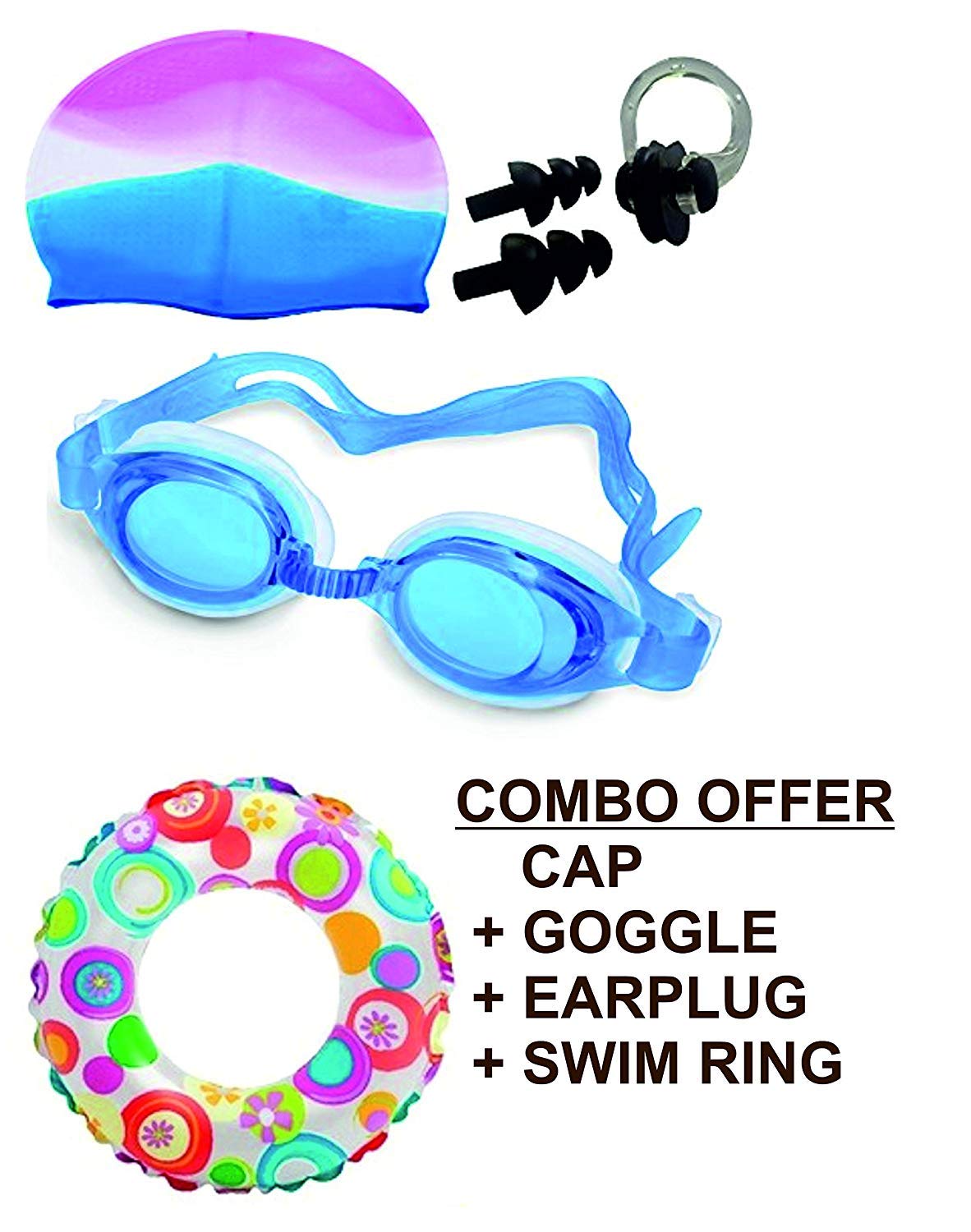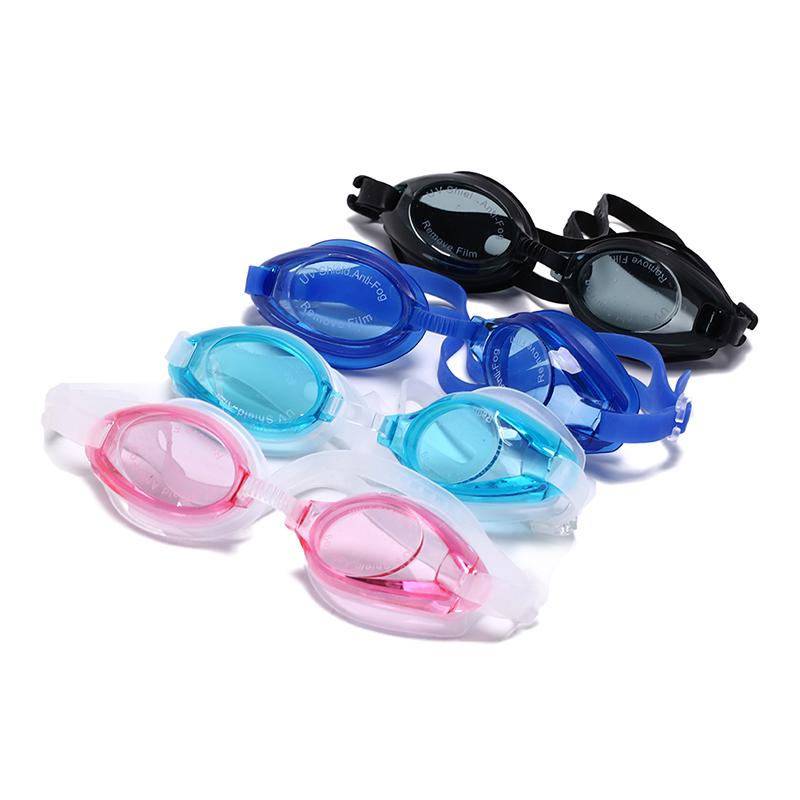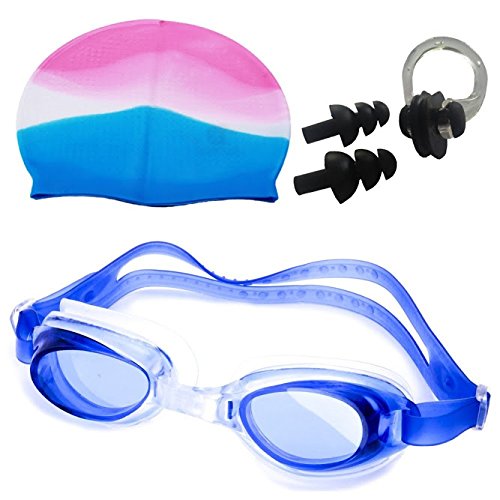BUY SWIMMING GOGGLES ONLINE
SHOP SWIMMING GOGGLES ONLINE IN INDIA
Swimming goggles are essential equipment for any swimmer,
whether you are a beginner or a seasoned pro. They are designed to protect your
eyes from the harsh chemicals in the pool water and to improve your vision underwater, allowing you to swim with greater ease and confidence. In this article, we will discuss the benefits of wearing swimming goggles and provide some tips on how to choose the right pair for your needs.
Benefits of wearing swimming goggles:
Protect your eyes:
Chlorine and other
chemicals found in pool water can be harmful to your eyes, causing redness,
irritation, and even damage to your vision. Swimming goggles protect your eyes
from these harmful chemicals, keeping them safe and healthy.Improve your vision:
Swimming goggles
provide clear vision underwater, allowing you to see where you're going and to
spot potential obstacles in your path. This is especially important when
swimming in open water or in poorly-lit pools.Reduce water resistance:
Swimming
goggles create a seal around your eyes, reducing the amount of water that
enters your goggles and creating less drag in the water. This helps you swim
faster and with less effort.Increase confidence:
With clear vision
and protection for your eyes, you'll feel more confident in the water and be
able to focus on your technique and speed.
How to Choose The Right Swimming Goggles
Consider the fit:
The fit of your
swimming goggles is crucial for both comfort and function. Make sure the goggles
create a tight seal around your eyes without causing discomfort or leaving
marks on your skin. Try on different sizes and shapes to find the right fit for
your face.Choose the right lens type:
There are
several lens types to choose from, including clear, tinted, mirrored, and
polarized lenses. Clear lenses are great for indoor swimming and low-light
conditions, while tinted and mirrored lenses are better for outdoor swimming in
bright sunlight. Polarized lenses can help reduce glare and improve visibility
in open water.Check the anti-fog feature:
Anti-fog
technology is important to prevent your goggles from fogging up while swimming.
Look for goggles with anti-fog coating or built-in anti-fog technology.Consider the strap:
The strap should be
adjustable and comfortable, without pulling on your hair or causing discomfort
around your head. Some goggles come with a double strap for added security.Check the durability:
Make sure your
goggles are made from high-quality materials that can withstand regular use in
the pool. Look for goggles with scratch-resistant lenses and sturdy frames.
Caring For Your Swimming Goggles
To ensure your swimming goggles last as long as possible,
follow these tips:
- Rinse your goggles with clean water after each use to remove
chlorine and other chemicals. - Do not wipe the inside of the goggles with your fingers or a
towel, as this can scratch the lenses. Instead, rinse them with clean water and
allow them to air dry. - Store your goggles in a protective case to prevent scratches
and damage. - Avoid leaving your goggles in direct sunlight or high heat,
as this can cause the lenses to warp or become damaged.
In conclusion, swimming goggles are an essential piece of
equipment for any swimmer, providing clear vision, eye protection, and reduced
water resistance. By choosing the right pair of goggles and caring for them
properly, you can enjoy a comfortable and confident swimming experience.
Types of Swimming Goggles:
Swimming goggles are available in a wide variety of types
and styles, each designed to meet the needs of different swimmers. Here are
some of the most common types of swimming goggles:
Classic Goggles:
These are the most
basic type of swimming goggles and are often used by beginner swimmers. They
have a simple, one-piece frame and a single strap that goes around the back of
the head. They are affordable and come in a variety of colors.Swedish Goggles:
These are minimalist
goggles that have a small, hard frame and no padding. They are customizable,
with interchangeable lenses and adjustable straps. They are popular among
competitive swimmers due to their streamlined design and low profile.Mask goggles:
These goggles have a
larger, more comfortable frame that covers the eyes and nose. They are great
for swimmers who prefer a wider field of vision and more comfort around the
face. They often have a double strap for added security.Prescription goggles:
These goggles
have lenses that are customized to your prescription, allowing you to swim
without the need for contact lenses or glasses. They are available in a variety
of styles, including classic and mask goggles.Kids Goggles:
These are smaller goggles
designed for children. They often have fun designs and bright colors, and come
with adjustable straps to ensure a snug and comfortable fit.Polarized Goggles:
These goggles have
polarized lenses that reduce glare and improve visibility in open water or
bright sunlight. They are great for triathletes and open water swimmers.Mirrored Goggles:
These goggles have
mirrored lenses that reflect light and reduce glare. They are often used by
competitive swimmers who want to minimize distractions and improve their focus.Tinted goggles:
These goggles have
lenses that are tinted in different colors, such as blue, yellow, or pink. They
are great for outdoor swimming and can help reduce eye strain in bright
sunlight.Anti-fog goggles:
These goggles have a
special coating or built-in technology that prevents fogging. They are great
for swimmers who struggle with fogging and want to maintain clear vision
underwater.Triathlon goggles:
These goggles are
specifically designed for triathletes and often have a streamlined design and
interchangeable lenses. They are designed to be comfortable for long periods of
time and to provide clear vision in open water.
In conclusion, there are many different types of swimming goggles available to meet the needs of swimmers of all ages and skill levels.
Whether you're a beginner or a seasoned pro, there is a pair of goggles out
there that will help you swim with greater comfort, clarity, and confidence.
Take the time to explore the different types of goggles available and choose
the pair that best suits your needs and preferences.
FAQs about Swimming Googles
Here are some frequently asked questions about boys Swimming Googles:
What are swimming goggles?
Swimming
goggles are protective eyewear that are worn while swimming to protect the eyes
from water and other irritants.Why are swimming goggles important?
Swimming
goggles are important because they help swimmers see clearly underwater,
protect the eyes from chlorine and other irritants, and reduce the risk of eye
infections.How do I choose the right swimming goggles?
When
choosing swimming goggles, consider factors such as the type of swimming you'll
be doing, the fit and comfort of the goggles, the lens type, and the price.What is the difference between regular goggles and
swimming goggles?
Regular goggles are designed for everyday use,
while swimming goggles are specifically designed for use in the water. They
have a watertight seal, are made of materials that are resistant to chlorine
and other chemicals, and have lenses that are designed to reduce glare and
improve underwater vision.Can I wear contact lenses while swimming?
It
is not recommended to wear contact lenses while swimming because they can
become contaminated with bacteria and other irritants in the water, which can
cause eye infections. Instead, consider wearing prescription goggles or a
swimming cap with built-in lenses.How often should I replace my swimming goggles?
Swimming
goggles should be replaced every six to twelve months, depending on how often
they are used and how well they are cared for.How do I clean my swimming goggles?
To
clean swimming goggles, rinse them in clean water after use and gently wipe the
lenses with a soft cloth. Avoid using abrasive cleaners or harsh chemicals that
can damage the lenses.How do I prevent fogging in my swimming goggles?
To
prevent fogging in your swimming goggles, try using an anti-fog spray or gel,
or use saliva to coat the lenses before swimming.How do I adjust the straps on my swimming goggles?
To adjust the straps on your swimming goggles, pull the straps
through the buckles until the goggles fit snugly but comfortably against your
face.Can swimming goggles be worn over prescription
glasses?
Yes, swimming goggles can be worn over prescription
glasses, but it is recommended to use prescription goggles instead for better
comfort and vision.What are polarized swimming goggles?
Polarized
swimming goggles have lenses that reduce glare and improve visibility in open
water or bright sunlight.Can swimming goggles be used for snorkeling or
diving?
Swimming goggles are not recommended for snorkeling or
diving because they do not provide the necessary pressure equalization and
protection for deeper underwater activities.Can swimming goggles cause headaches?
If
swimming goggles are too tight or do not fit properly, they can cause
headaches. Make sure to choose goggles that fit snugly but comfortably against
your face.What are the benefits of tinted swimming goggles?
Tinted
swimming goggles can help reduce eye strain and improve visibility in bright
sunlight or outdoor swimming.Can I wear swimming goggles with a swim cap?
Yes,
swimming goggles can be worn with a swim cap for added comfort and protection.What are prescription swimming goggles?
Prescription
swimming goggles have lenses that are customized to your prescription, allowing
you to swim without the need for contact lenses or glasses.What are mirrored swimming goggles?
Mirrored
swimming goggles have lenses that reflect light and reduce glare, which can be
helpful for competitive swimmers who want to minimize distractions.How do I store my swimming goggles?
To
store your swimming goggles, keep them in a cool, dry place and avoid exposing
them to direct sunlight or extreme temperatures.Can I swim with damaged goggles?
Swimming
with damaged goggles is not recommended as it can cause irritation or injury to
the eyes.
Also Check: Men Shorts | Men Tank Top | Long Trunk
Lets Treat Yor'self. Happy Poftik Shopping.



